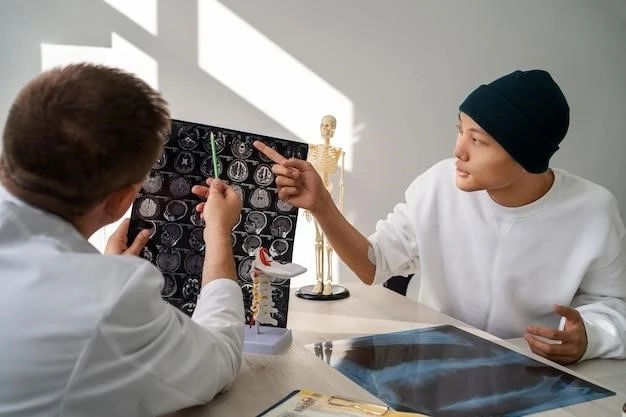Disease ─ Leukomelanoderma, Mental Retardation, Hypotrichosis
Leukomelanoderma, Mental Retardation, and Hypotrichosis are genetic disorders with overlapping symptoms. This article delves into the genetic basis, syndrome overview, diagnosis, and the impact on neurological, cognitive, skin and hair pigmentation, and developmental challenges.
I. Introduction
Leukomelanoderma, Mental Retardation, and Hypotrichosis are rare hereditary disorders that affect individuals worldwide. Leukomelanoderma refers to a skin condition characterized by a combination of pigmentation abnormalities, Mental Retardation is a cognitive impairment that impacts daily functioning and Hypotrichosis is a condition where there is a reduced amount of hair on the body.
These three conditions have distinct symptoms, but there are reported cases where individuals exhibit traits of all three disorders. Understanding the genetic basis of these disorders is crucial for accurate diagnosis and management. This article provides an in-depth exploration of the genetic components, clinical manifestations, and challenges associated with Leukomelanoderma, Mental Retardation, and Hypotrichosis.
II. Understanding the Condition
Leukomelanoderma is a skin disorder characterized by patches of both light and dark skin pigmentation. Mental Retardation, also known as intellectual disability, affects an individual’s cognitive abilities, leading to challenges in communication, learning, and daily living skills. Hypotrichosis involves sparse or absent hair growth on the scalp, body, or both.
The overlap of these conditions in some individuals poses complex diagnostic and management considerations. The genetic underpinnings of these disorders involve mutations in specific genes associated with pigmentation, neurological function, and hair development. Understanding the molecular mechanisms behind these conditions is crucial for personalized treatment approaches.
Individuals with Leukomelanoderma may experience self-esteem issues due to visible skin changes, while those with Hypotrichosis might face social challenges related to their hair. Mental Retardation can manifest in varying degrees, impacting intellectual functioning and adaptive behavior. The interplay of these conditions can result in a unique set of challenges for affected individuals and their families.
III. Genetic Basis
The genetic etiology of Leukomelanoderma, Mental Retardation, and Hypotrichosis is complex and involves a variety of gene mutations. Leukomelanoderma can be caused by mutations affecting melanin production or distribution in the skin. Mental Retardation often results from genetic mutations impacting brain development and function.
Hypotrichosis is linked to mutations in genes responsible for hair follicle formation and growth. In some cases, individuals may inherit these conditions through an autosomal recessive or dominant pattern, indicating that a single mutated gene copy can lead to the disorder. Genomic studies have identified specific loci on various chromosomes associated with these disorders.
Deletions or alterations in critical regions of the genome can disrupt important signaling pathways involved in pigmentation, neurological development, and hair growth. These genetic aberrations contribute to the heterogeneous nature of Leukomelanoderma, Mental Retardation, and Hypotrichosis. Understanding the underlying genetic defects is essential for accurate diagnosis and potential targeted therapies.
IV. Syndrome Overview
Individuals with the combination of Leukomelanoderma, Mental Retardation, and Hypotrichosis may present with a unique syndrome that showcases intertwined clinical features. This rare syndrome manifests as a triad of skin pigmentation abnormalities, cognitive impairments, and decreased hair growth.
While each condition on its own poses challenges, the presence of all three can exacerbate the complexity of symptoms and management. The syndrome’s presentation can vary widely, with some individuals experiencing more severe skin pigmentation issues, while others may have pronounced developmental delays.
Medical professionals must be vigilant in recognizing this syndrome’s distinct features to provide appropriate care and support. The overlap of Leukomelanoderma, Mental Retardation, and Hypotrichosis underscores the need for a multidisciplinary approach to address the varied needs of affected individuals comprehensively.
V. Diagnosis and Clinical Presentation
Diagnosing the combination of Leukomelanoderma, Mental Retardation, and Hypotrichosis requires a comprehensive evaluation of clinical manifestations and genetic testing. Clinically, individuals may present with distinct skin pigmentation patterns, cognitive delays, and hair thinning or loss.
Physicians will conduct a thorough physical examination to assess the extent of skin pigmentation abnormalities and hair growth patterns. Additionally, cognitive assessments will be performed to gauge intellectual functioning and identify areas of developmental delay. Genetic testing plays a pivotal role in confirming the underlying genetic mutations contributing to the syndrome.
The clinical presentation of this syndrome can vary widely, with some individuals showing milder symptoms, while others may exhibit more severe manifestations. Early diagnosis is critical to implementing supportive interventions that cater to the individual’s specific needs and challenges associated with the triad of conditions.
VI. Neurological and Cognitive Implications
The combination of Leukomelanoderma, Mental Retardation, and Hypotrichosis can have profound neurological and cognitive implications for affected individuals. Mental Retardation, characterized by intellectual disabilities, may impact various cognitive domains such as reasoning, problem-solving, and adaptive skills.
Neurological challenges can arise due to genetic mutations affecting brain development and function. Individuals with this syndrome may exhibit difficulties in communication, social interaction, and learning. The interplay of these conditions can present a complex neurodevelopmental profile requiring tailored interventions.
Neurologists and cognitive specialists play a crucial role in assessing cognitive abilities, designing individualized therapy plans, and providing rehabilitative services to enhance quality of life. Understanding the neurological underpinnings of this syndrome is essential for addressing the specific cognitive impairments and adapting educational strategies to meet the individual’s needs.
VII. Skin and Hair Pigmentation
Leukomelanoderma, Mental Retardation, and Hypotrichosis impact both skin and hair pigmentation, contributing to the distinctive features seen in affected individuals. Leukomelanoderma presents as patches of hypo- and hyperpigmented skin, giving rise to a mosaic pattern across the body.
Individuals with this syndrome may experience challenges related to self-perception and social interaction due to visible skin differences. Hypotrichosis leads to decreased hair density or absence of hair in specific regions, affecting scalp, eyebrows, eyelashes, and body hair.
Changes in hair texture and color can further compound the impact of this syndrome on an individual’s appearance and self-esteem. Dermatologists and hair specialists play a key role in managing skin pigmentation abnormalities and hair growth issues, offering treatments to improve dermatological health and enhance aesthetic outcomes. Embracing individuality and promoting self-acceptance are important aspects of supporting individuals with diverse skin and hair pigmentation patterns.

VIII. Developmental Challenges
Individuals affected by the combination of Leukomelanoderma, Mental Retardation, and Hypotrichosis face unique developmental challenges spanning physical, cognitive, and psychosocial domains. Developmental delays associated with Mental Retardation can impact milestones such as speech development, motor skills, and social interaction.
The interplay of these conditions can lead to a complex developmental trajectory, requiring tailored interventions and support. Psychologists, occupational therapists, and developmental specialists collaborate to provide comprehensive care addressing the multifaceted needs of affected individuals.
Physical challenges, such as alopecia in Hypotrichosis, may influence self-image and confidence during critical developmental stages. Early intervention programs and educational support can help individuals navigate these challenges and reach their full potential.
IX. Chromosomal Abnormalities
Chromosomal abnormalities play a significant role in the manifestation of Leukomelanoderma, Mental Retardation, and Hypotrichosis. Genetic analyses have identified chromosomal deletions and mutations that underlie these hereditary conditions, impacting various physiological processes.
Deletions in specific chromosomal regions can disrupt the expression of genes critical for pigmentation, neurological development, and hair follicle formation. The effect of these chromosomal aberrations can be far-reaching, leading to the characteristic clinical features observed in individuals with this syndrome.
Understanding the chromosomal basis of these disorders is essential for genetic counseling, diagnostic accuracy, and potential targeted therapies. Advances in genomic technologies have enabled a deeper exploration of the intricate genetic mechanisms driving Leukomelanoderma, Mental Retardation, and Hypotrichosis, paving the way for more precise interventions tailored to each individual’s genetic profile.
X. Conclusion
In conclusion, Leukomelanoderma, Mental Retardation, and Hypotrichosis represent a complex syndrome characterized by overlapping manifestations affecting skin pigmentation, cognitive function, and hair growth. The genetic underpinnings of these disorders underscore the intricate interplay between chromosomal abnormalities and clinical presentation.
Diagnosis and management of this syndrome require a multidisciplinary approach involving dermatologists, neurologists, geneticists, and developmental specialists to address the diverse needs of affected individuals comprehensively. Early detection, genetic counseling, and personalized interventions play vital roles in optimizing outcomes and improving quality of life for individuals with this rare condition.
By advancing our understanding of the genetic, neurological, and developmental aspects of Leukomelanoderma, Mental Retardation, and Hypotrichosis, researchers and healthcare providers can pave the way for innovative therapies tailored to target the underlying causes of this syndrome. Collaborative efforts in research and clinical practice will continue to enhance the care and support available to individuals and families affected by this challenging genetic disorder.
